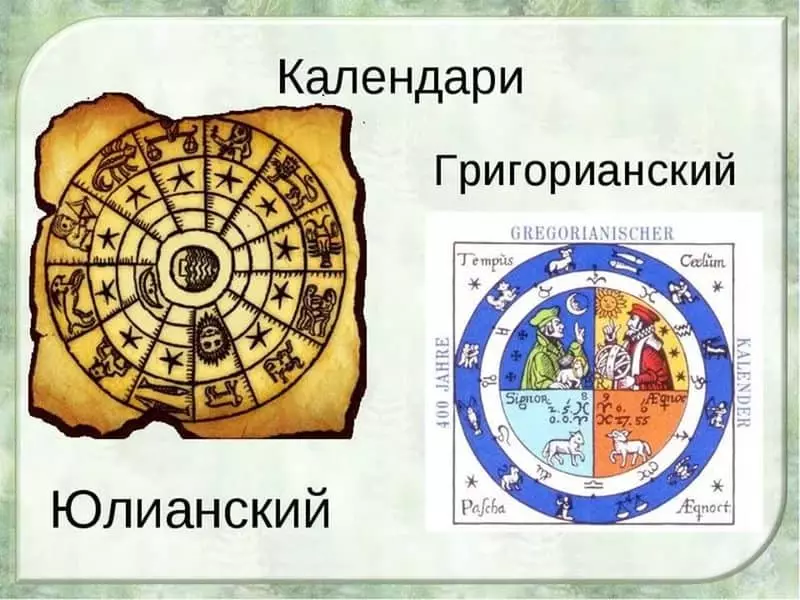We all repeatedly heard about the bad glory, which, allegedly, have leap years. But is it so terrible, how is his little? Should I be afraid of leap years, transferring all significant events for the next year? I propose answers to the questions set in today's article, as well as learn what were the leap years of the 20th century.

Historical certificate of leap years
Ancient Rome Star knew that the Earth would fully rotate around the daylight not exactly in 365 days, but there is a small balance.Find out what awaits you today - a horoscope for today for all zodiac signs
By numerous subscribers requests, we have prepared an accurate horoscope application for a mobile phone. Forecasts will come for your zodiac sign every morning - it is impossible to miss!
Download free: Horoscope for every day 2020 (Available on Android)
Over time, this residue begins to accumulate, it becomes quite large and causes the inconsistency of the astronomical year with real time. Then begin to shift the seasons, natural phenomena, such as spring and autumn equinox.
In order to adjust the calendar and eliminate this residue of astronomers who worked at the court of the Roman ruler Julia Caesar, offered to make some changes. Namely - to each fourth year to add one more day. The new calendar gets the name of Julian and begin to use it from 45 to our era.
The year with 366 days was called "BIS SEXTUS" or, if we translate from Latin "The Second Six". Gradually, the innovation came to the Russian lands. Only here unusual years began to call leaps.
When Julia Caesar was killed, there was a failure to install leap years. The new countdown takes its beginning from 8 years to our era. In this connection, to date, the leap can be an extremely merged year.
Under the influence of these changes, they decided to add "extra" day to the shortest month of the year. In the Ancient Roman Empire, the New Year had not for the winter, as we, but on March 1. Therefore, added a day was added to the last day of February.
Interesting moment. Nowadays, adherents of some religious flows (for example, Catholics) use not Gregorian, more modern, and Julian calendar.
As the Gregorian calendar approved
But the development of the science of astronomy did not stop, its techniques were improved, becoming more and more faithful. At some point, the starvators understand that the astronomical year is not 365 days and 6 hours, as they thought before, and this figure is slightly smaller.
This is today we know that the exact duration of each year is equal to 365 days, 5 o'clock, 48 minutes and 46 seconds.
As a result of the use of Julian calculus of time, the calendar begins to be a bit from the actual time. According to the observations of astronomers, the date of the spring equinox accounts for the previously laid dates (March 21). There is a need for a new calendar adjustment. It was fulfilled in 1582 to indicate the Pope Gregory XIII.

To eliminate the inconsistency, it was approved to install leap years on a new technique - simply reduced their number. It is since that time it is customary to find a leap every year, which is multiple 4. And in order to perform even more faithful summer, do not take into account the years shared without residue by 100, but use those that are divided by 400.
According to the reason indicated above, for example, 1900 - did not apply to the leap, but 2000 - he was already.
The new approved calendar was called in honor of his creator - Gregoryan. Nowadays, almost all global states are used.
How to determine leapy years
It acts an extraordinarily simple algorithm here, you just need to remember the next nuances:- The ledges find those years that are divided into 4 without a residue, as well as 100 and 400 at the same time;
- If the year is divided into exactly 100, but not divided by 4 or 400 - it is not a leap.
What is the difference between the leap year from the usual
The most important difference is only among the day - in the usual year of them 365, and in the leap - 366. Although now the beginning of the year falls on January 1, the shortest month of the year is February. Therefore, the extra day and decided to calculate it.
The only ones who can to some extent suffer from leap years are people who appeared on February 29. After all, they have certain difficulties with the celebration of their birthday.
In addition, the most important sports event in the Olympiad is held in the leap years. To date, the Summer Olympics is carried out at the leap year, and the winter is tolerated for 2 years. In the modern sports world, the oldest traditions approved by the very first Olympians are continued - the ancient Greeks.
After all, it was the last to be decided that the conduct of such a large-scale and significant event should not take place very often and once every 4 years will be enough. And four-year cycles coincided with a change in leap years, respectively, the Olympiads are carried out according to them.

Why leap year has bad fame
According to a common belief in leap years, various troubles are collapsed on people, many natural disasters and disasters occur. But where did the sources of the superstitions come from?According to old legends, February 29 is Kasyan Day. Allegedly, he angry his behavior of God and he sent him a punishment in the form of permanent strikes. And only one day for 4 years Kasyan can relax from his executions.
Then he is poisoned to walk along the ground, creating all sorts of villains. For that, Kasyan will look, what he will not get caught - everything starts to collapse, disappear.
In ancient times, people even feared their nose to show on the street on February 29 without a special need. They were hiding not only themselves, but also a cattle and a bird so that Kasyan could not get to them.
Most likely, the negative attitude towards leap years proceeds precisely from here. People began to endure the negative from the 29th of the last month of winter for the whole year, hanging it out by the same bad properties.
But in reality there are no objective evidence that a leap year is something worse than usual. Different disasters, catastrophes and misfortunes occur in other years and often their no less. That is, all the bad glory of the leap years is nothing but just folk prejudices, superstition.
Leap years 20th century: list
Having understood that it is a leap year from himself, let's find out what years in the past century were unusual.
- 1904;
- 1908;
- 1912;
- 1916;
- 1920th;
- 1924;
- 1928;
- 1932th;
- 1936;
- 1940;
- 1944;
- 1948;
- 1952;
- 1956;
- 1960s;
- 1964;
- 1968;
- 1972;
- 1976;
- 1980th;
- 1984;
- 1988;
- 1992;
- 1996;
- 2000th.
In conclusion
You can sum up the results of this topic:
- The leap year is necessary to compensate for the gathered days for 4 years, which are transformed into an extra day.
- Do not believe in bad signs, as the bad glory of the leap year is nothing more than human superstition, unaffected.
- And, it means to transfer the wedding, pregnancy, purchase or sale of real estate (all these actions for the signs are prohibited during the leap years) for 12 months it does not make any sense.
